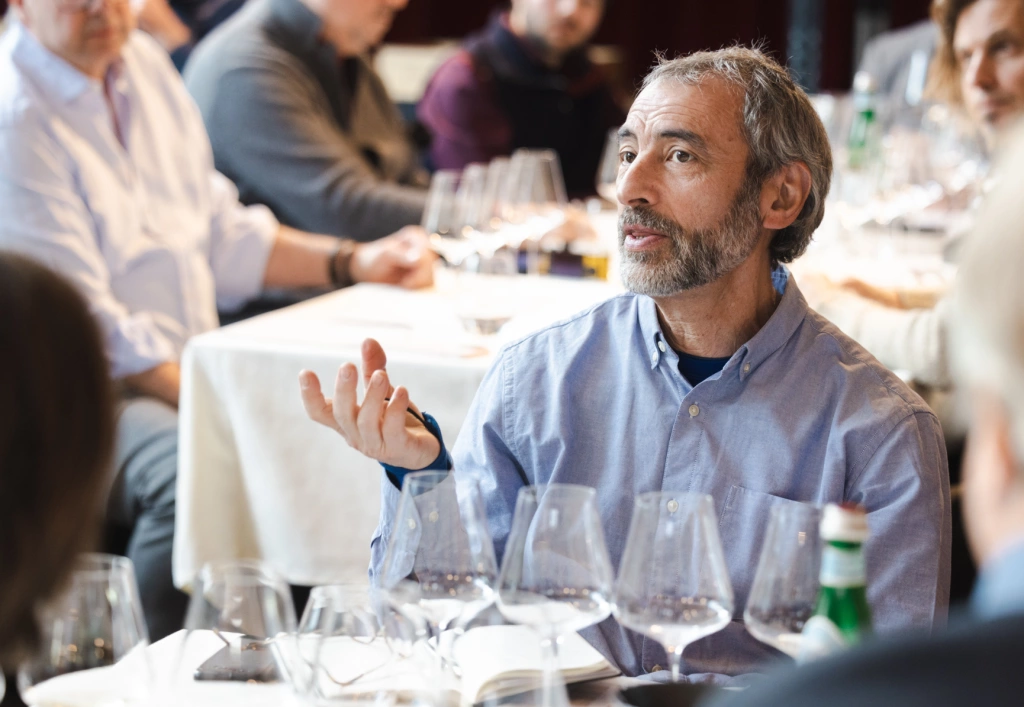
"These are wines we would recommend to our friends"

Wine & Spirits Editor Joshua Greene reveals in an interview how the magazine's Top 100 Wineries ranking makes its selections and why this particular list is indispensable.
Joshua Greene is a much sought-after interviewee these days. As the Editor and Publisher of the renowned US magazine Wine & Spirits, he has just published the internationally acclaimed list of the Top 100 Wineries. Despite his busy schedule, he found time for a short interview with Wine+Partners to take us behind the scenes and reveal how the ranking is created. Wine & Spirits has published Wineries of the Year since 1987 and the Top 100 Wineries since the 1990s.
Wine+Partners: How does a winery get listed in the Top 100 Wineries ranking? Is it easy to apply?
Joshua Greene: "A winery cannot apply to be included, but can submit wines to our tasting panels during the year, which is the only way to be considered."
What criteria are used to select the wineries (and their wine portfolio) for the tasting process?
"Our tastings are open to all wines available for sale in the US market, with our submission protocol detailed on our website."
We look for balance and harmony in the wines we taste. And in the wines we love, we find a clear and compelling identity.
The basis of the ranking is a two-stage blind tasting process in which, according to your information, thousands of producers are reviewed. How many wines are tasted and according to what criteria or scheme are they evaluated?
We taste wines by category, between 24 and 36 wines in a session, with three to eight panelists, depending on the trade's interest in the category. The panelists are sommeliers, retail trade buyers, along with some educators and journalists. We present the wines by flight in numbered glasses. The panels are given information on vintage, appellation and variety; we only give panelists pricing information when the retail price is below $20.
We ask each panelist if they would recommend the wine to a friend and would they drink it with their friend? The wines a majority of the panelists recommend are then retasted, under the same blind conditions, to the critic for that category to rate and review.
The tastings – there are several hundred per year – are not snapshots, some wines are tasted over and over again for days to see their development potential."
How big is the team behind the ranking? Who is part of the team?
"There are currently six people working as critics; there are four people working on tasting logistics. The critics include Stephanie Johnson (Italy), Patrick J. Comiskey (USA), Corey Warren (Argentina, Southern France, Eastern Europe), Susannah Smith (Greece), Joshua Greene (Northern France, Central Europe, Iberia, Chile, the Antipodes), Jamal Rayyis (Armenia, and soon to be more). Corey Warren is our Tastings Editor and manages the logistics team.
How long does the preparation of the ranking take? How long do you and your team work on it?
"Not really possible to say. It varies completely by tasting."
The Top 100 Wineries ranking has been published since the 1990s. Have any trends that emerged over this time? For example, have certain regions become popular or has the proportion of women-owned wineries increased?
"Certainly, there are more women owned wineries, but there have always been women in leadership roles in this business, at least since the 19th century (consider Veuve Clicquot, Dona Antonia Adelaide Ferreira, or in the 20th century, Lily Bollinger)"
Have you had feedback on the impact of the ranking from the listed wineries themselves?
"Since the award is based on such extensive research in a full year's worth of tastings, those who earn a place among the Top 100 are often pretty excited. We also hear when consistently awarded wineries miss the cut, as they contact us to learn where their wines missed this year, hoping to perform better in the next year of tastings."
There are already so many rankings and lists, some critics say that there are way too many. What makes the Top 100 Wineries ranking so special and indispensable?
"No ranking is indispensable, but as we are the only major wine review source that tastes in a rigorous format blind to producer and price, with constant checks on that process from rotating trade participation, and since our tastings structure is more open and transparent than other wine review sources, the value of the award is significant."
"Our tastings structure is more open and transparent than those of other wine review sources."
Since we are based in Austria, we have to ask...will there be any new entries for Austria) this year?
"Dorli Muhr from Carnuntum and the Wachter-Wiesler winery from Eisenberg are both first time award winners this year. Rudi Pichler (Wachau) has earned their third award this year, and Moric has now earned eight.














